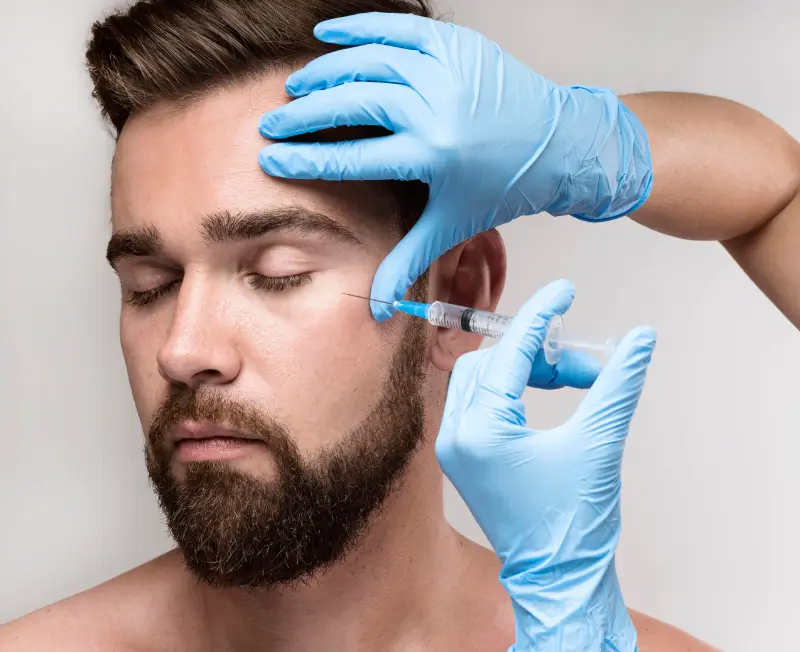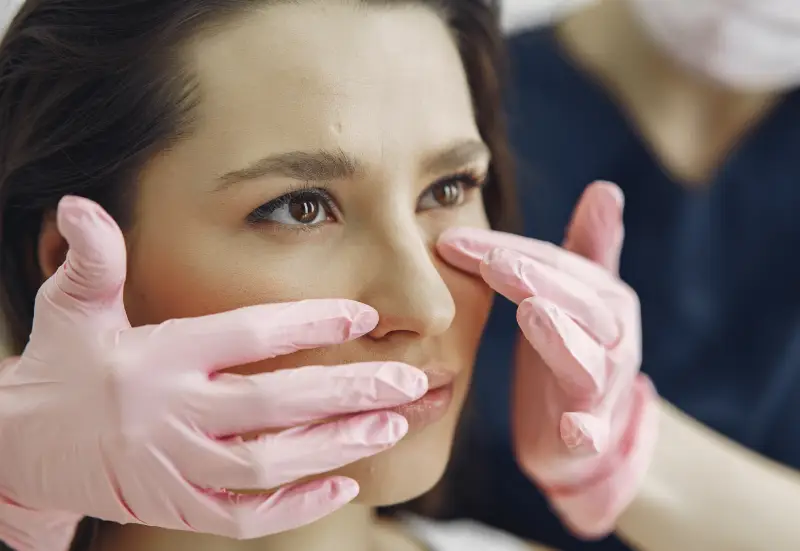Skin Health & Beauty Clinic
Milia Removal in Bournemouth

What is Milia Removal?
Milia, which are small, raised cysts or spots on the skin, typically appear white or yellowish in colour. They commonly occur around the eyes and cheeks but can emerge anywhere on the body. Unlike pimples, milia feel hard and lack redness or inflammation. They often cluster around the eyes, although single milia can occur and may appear on various body parts, including the genital area.
Causes of Milia?
Milia form due to an accumulation of keratin beneath the skin’s surface, a naturally occurring protein. Dermatologists propose that this buildup could result from sweat gland damage following skin trauma or, in newborns, blocked sweat glands. As we age, cell turnover slows, rendering mature skin more prone to recurrent milia. While milia aren’t contagious or harmful, they can cause self-consciousness, particularly if they appear on visible areas like the face. Although milia may naturally resolve over time, they can also be professionally removed through simple procedures, such as using a sterile needle, depending on their type, location, and quantity.


Is Milia Removal A Safe Procedure?
Opting for treatment from a qualified and experienced aesthetic professional at Skin Health & Beauty Clinic In Bournemouth ensures the safest and most effective removal of milia. Our procedures take place in meticulously sterilised operating environments, overseen by doctors with extensive experience. Adhering to rigorous medical protocols, you can trust that our procedures are conducted with utmost safety and care.
Can I treat Milia By Myself?
While milia often resolve on their own over time, they can persist for months or even years in some cases. Regularly exfoliating with a quality exfoliant and ensuring thorough makeup removal before bedtime may aid in preventing the recurrence of milia, although existing milia cannot be eliminated through these methods and will require our qualified aesthetic clinician at Skin Health & Beauty Clinic in Bournemouth.

FAQ
Frequently Asked
How should I prepare for a milia removal procedure?
During your consultation, you may receive guidance to prime your skin beforehand. This typically involves incorporating a gentle exfoliating cleanser and a vitamin A product into your skincare routine. These products serve to soften the skin covering the milia, facilitating easier removal, and may also aid in preventing the formation of new milia.
Can Milia disappear on their own without intervention?
Could skincare products exacerbate Milia beneath the eyes?
If you’re experiencing milia, especially around the eye region, your skincare routine might be a contributing factor. The delicate skin surrounding the eyes is thinner compared to the rest of the face, meaning dense or heavy eye creams could potentially clog pores and retain dead skin cells. Therefore, it’s advisable to opt for a high-quality, lightweight eye cream. Additionally, sun damage or allergic reactions to harsh facial products could also be culprits.
Is Milia elimination a secure process?
The most reliable approach to safely and efficiently remove milia. Our milia removal procedures are conducted in meticulously hygienic, clinical settings in a well-equipped and CDP accredited clinic in Bournemouth by highly experienced aesthetic clinicians. We, at Skin Health & Beauty Clinic in Bournemouth, Dorset adhere strictly to the UK aesthetic standards, ensuring that the procedures are conducted with the utmost safety and precision, providing you with peace of mind.
What milia variations exist?
Five primary types include:
Neonatal Milia: Often termed ‘milk spots,’ these occur in newborns, likely due to underdeveloped sweat glands.
Primary milia: Common in both children and adults, they may fade naturally but often persist longer in adults, sometimes becoming permanent.
Secondary Milia: Resulting from skin injury or certain creams, these stem from sweat gland damage in the affected area.
Milia En Plaque: A less common form found on raised, inflamed skin patches known as ‘plaques.’
Multiple eruptive milia: Rare clusters that emerge gradually over weeks or months, typically appearing on the face, upper arms, and upper torso.
sKIN HEALTH & BEAUTY CLINIC & ACADEMY ADDRESS
Find our Clinic
Opening Times
| Day | Hours |
|---|---|
| Monday | 10:00 - 14:00 16:00 - 20:00 |
| Tuesday | 10:00 - 16:00 |
| Wednesday | 10:00 - 14:00 16:00 - 20:00 |
| Thursday | 10:00 - 14:00 16:00 - 20:00 |
| Friday | 9:30 - 14:00 16:00 - 20:00 |
| Saturday | 10:00 - 17:00 |
| Sunday | 10:00 - 12:00 |
Clinic Address
878, Christchurch road, Bournemouth BH76DJ
Telephone
07393 770773
Finding us
Our clinic is located on the left hand side of Christchurch Road a few meters away from Kwik Fit towards Iford roundabout, just at the Hannington Road Bus Stop. There is plenty of transport link to Bournemouth, Poole and Chirstchurch all day and free parking outside the clinic for an hour and in the side roads unlimited.
